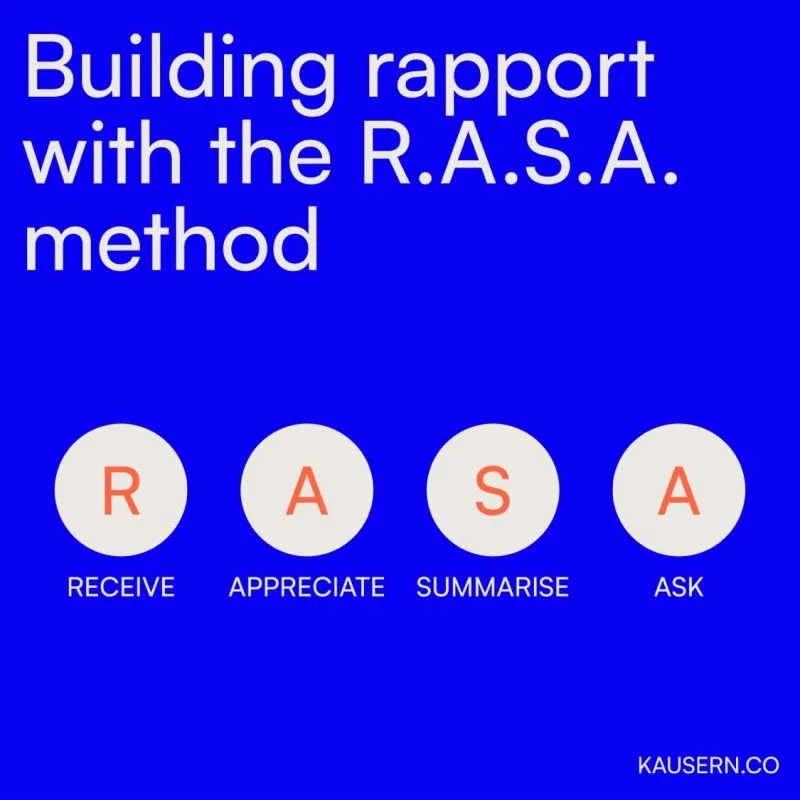Building rapport with the R.A.S.A method
When it comes to building strong relationships, rapport matters. Here’s a simple framework to build instant rapport.
What is rapport? Rapport is simply defined as having a good understanding of someone and the ability to communicate well with them. It usually involves mutual respect, trust, and empathy.
Rapport is important as it’s a key element to creating and maintaining successful, healthy, and fulfilling relationships.
I recently discovered a very accessible 4-step method to creating instant connections, called R.A.S.A. The acronym stands for Receive, Appreciate, Summarise and Ask. I came across this framework in Julian Treasure’s TED Talk entitled: 5 Ways to Listen Better.
Although R.A.S.A. is used to improve our general listening skills,this structured approach can also be applied to building rapport. (I also like this acronym because it means “feel” in Bahasa Melayu, which is most appropriate in this context of relationship building.)
R – RECEIVE:
Step one is to actively receive information shared by others. This involves giving your full attention and being present in the moment - to truly listen.
• Eliminate distractions and show genuine interest in what the other person is saying.
• Maintain eye contact and nod to signal that you are fully engaged in the conversation.
• Listen to what is being said as well as what is not said e.g. sensing the underlying emotions.
A - APPRECIATE:
Step two involves validating and appreciating the thoughts, feelings, and perspectives of the other person. Express empathy and affirmation to create understanding and support. Here are some examples of dialogue that demonstrate this step:
• "I can imagine how challenging that must be. It sounds like you're carrying a heavy load.”
• "It's completely understandable to feel disappointed in that situation.”
• "I want to acknowledge the effort you put into preparing for this presentation.”
S – SUMMARISE:
After receiving and appreciating the information shared, summarise the key points to let the other person know that you were actively engaged in the conversation. Summarisation also helps to clarify any potential misunderstandings and allows both parties to align on the main ideas.
• "Let me make sure I've got this right.”
• "So, if I understand you correctly…”
• "To recap…”
A – ASK:
The final step is to ask questions. This demonstrates a genuine interest in the other person and encourages them to share more about their thoughts and experiences. Ask open-ended questions to invite a dialogue. Don’t be too quick to solve their problem.
I invite leaders to start incorporating the R.A.S.A. method into your daily interactions, whether in personal or professional relationships. I long to see more leaders creating a positive environment for collaboration instead of fostering a hierarchical structure that discourages open communication and idea-sharing. 🤝

